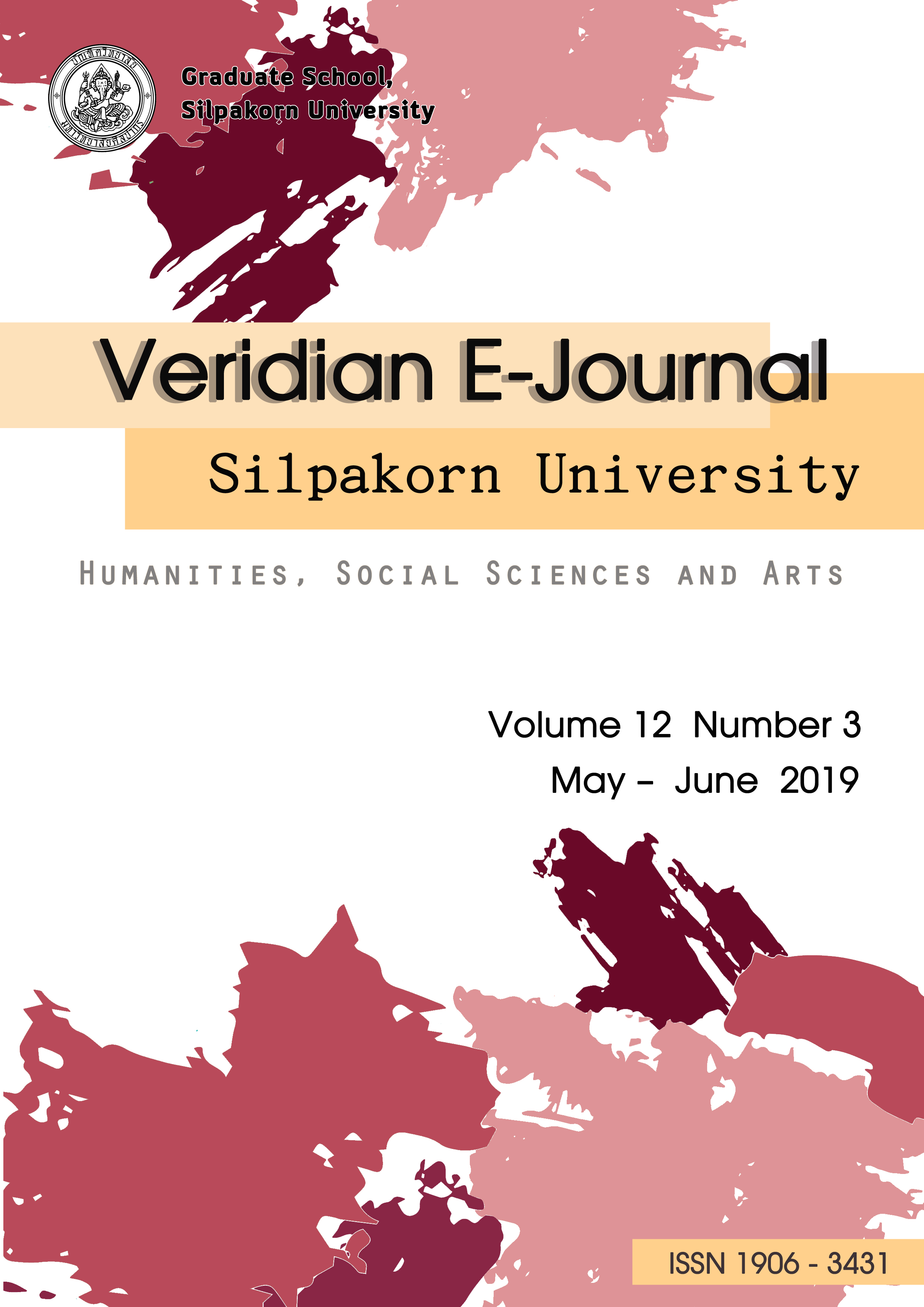Indicators of Quality Classroom Management for Happy Learning of Students in Secondary School บทนำ: ;วัตถุประสงค์และวิธีดำเนินการวิจัย: สรุปและอภิปรายผล: ข้อเสนอแนะ: เอกสารอ้างอิง
Main Article Content
Abstract
The research aimed to study the indicators of the quality classroom management for happy learning of the secondary school students. The research was conducted in three states. Stage one synthesized the components and indicators based on documentary study and an interview of experts. Seven experts examined and validated the content of components and indicators. Stage two evaluated the indicators and presented them to seven experts to evaluated suitability and possibility. They were then analyzed to find means, standard deviation of each indicator. The indicators were then corrected based on the recommendations by experts. Stage three analyzed confirmatory components of indicators. The samples were 500 teachers of the secondary schools under the Office of the Secondary Education Service Area 29. They were derived by a multistage random sampling. The research instruments were an interview, an evaluation, and an indicator verification form Statistics were means, standard deviation and an analysis of confirmatory components.
The research findings were as follows.
1) The quality classroom management consisted of the following: 1) classroom management comprised (1) classroom atmosphere with 20 indicators and (2) a teacher’s characteristics with 20 indicators; 2) learning management consisted of the following: (1) suitability of the lesson with 8 indicators, (2) learning and teaching activity with 10 indicators, (3) learning and teaching media with 12 indicators, (4) measurement and evaluation with 5 indicators.
2) The indicators were found to be suitable and possible at the highest level (= 4.72, 4.59). Considering individual issues, the classroom management was suitable and possible at the highest level (
= 4.85, 4.61). Learning management were suitable and possible at the highest level (
= 4.91, 4.74) 3). It was also found that the model in measuring the quality classroom management was in conformity with empirical data withc2=2156.369, df= 1672, p = .056, CFI = 0.996, TLI = 0.990, RMSEA = 0.033, SRMR = 0.035 และ c2/ df = 1.289.
Article Details
References
Methods and Research, 16 : 78-117.
Chatkup, S. (2001). Happy Learning: Brain Chemicals with Happiness and Learning.
Bangkok: Siam sport Syndicate Limited, 2544. [in Thai]
Gamlem, S. M. and Munthe, E. (2014) “Mapping the quality of feedback to support students’
learning in lower secondary classrooms,” Cambridge Journal of Education,
44:1, 75-92.
Hamre, B. K.,and Pianta, R. C. (2007) Learning opportunities in preschool and early elementary
classrooms. In R. C. Pianta, M. Cox, J. and Snow, K. (Eds.), School readiness and
the transition to kindergarten. Baltimore, MD: Brookes.
Innoi, P. (2016) “Factors that affect the avidity for learning behavior of the
undergraduate students at King Mongkut’s Institute of Technology Ladkrabang
(KMITL): The path analysis.” International (Humanities, Social Sciences and Arts),
Veridian E-Journal, Silpakorn University, 9 (5) July–December. [in Thai]
Kounin, J. (1990) Classroom Management Theorists and Theories. New York: R. E. Krieger.
Loveless, A. S. (2009). Conceptions of Happiness. New York: University Press of America.
Oliver, P. (1992) “Quality in the classroom: Philosophical aspects of measuring teacher
effectiveness,” The Vocational Aspect of Education, 44:2, 183-190.
Pedota, P (2007) “Strategies for Effective Classroom Management in the Secondary Setting,
The Clearing House,” A Journal of Educational Strategies, Issues and Ideas,
80:4, 163-168.
Phanchalaem, K. (2016). Development of Capacity Building Model on Teachers’
Assessment Information Use Based on Collaborative Immersion Approach.
Graduate Theses and Dissertation, Bangkok, Thailand: Educational Measurement
and Evaluation, Chulalongkorn University. [in Thai]
Podgursky, M. (2001). “Flunking ETS: The Educational Testing Service makes divining the
methods of good teachers look easy. It’s not,” Education Matters, 1(2), 75–78.
Pumchang, P. (2017). “Factor Analysis of Happy workplace of Thai Educational
Institutions,” Thai (Humanities, Social Sciences and Arts),
Veridian E-Journal, Silpakorn University, 10 (2) May–August. [in Thai]
Runjaroen, T. (2002). States and Problems of Administration and Management of Basic
Education in Thailand. Bangkok : V.T. C. Communication. [in Thai]
Srikhet, N. (2014). The Development of an Evaluation Model for Evaluating the
Quality Of Practicum Teacher Students’ Classroom Action Research at
Srinakharinwirot University. Graduate Theses and Dissertation,
Bangkok, Thailand:Testing and Measurement, Srinakharinwirot University. [in Thai]
Uengcharoen, N. (2009). A Study of the Relationship Between Some Factor and
Learning in Class with Happiness of Prathomsuksa VI Students Krungtonburi
Group to Bangkok. Graduate Theses, Bangkok, Thailand:Educationnal Research and
Statistics, Srinakharinwirot University. [in Thai]
Wangphasit, P. (2014). A Development of Learning English Model for Enhancing
Happiness Learning of Elementary Students at Demonstration Schools Under
the Office of Higher Education Commission. Graduate Theses and Dissertation,
Bangkok, Thailand: Curriculum Research and Development,
Srinakharinwirot University. [in Thai]
Wayne M. and Garrison, W. M. (2004) “Profiles of Classroom Practices in U.S. Public Schools,
School Effectiveness and School Improvement,” An International Journal of
Research, Policy and Practice, 15:3-4, 377-406.

